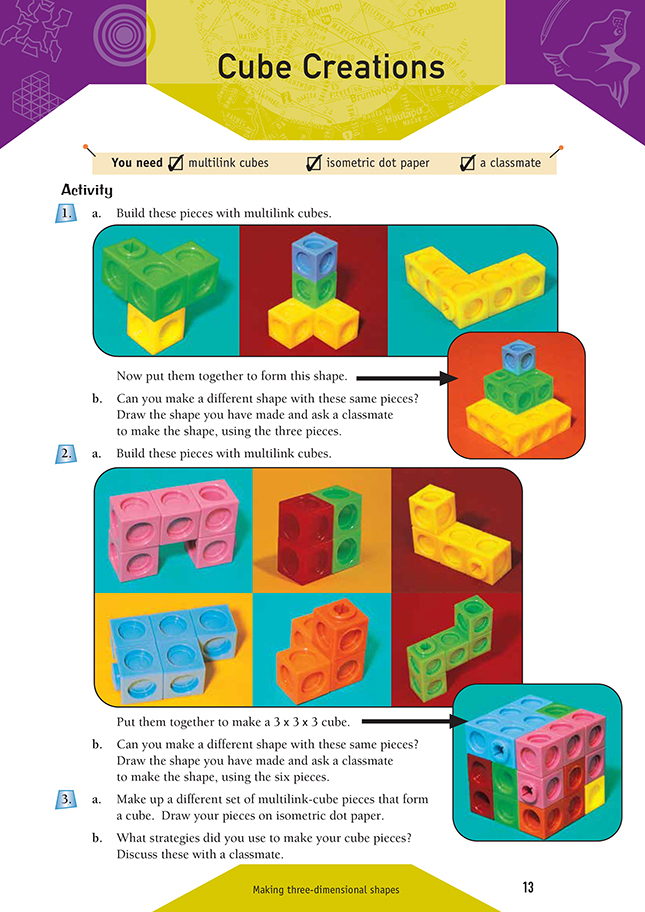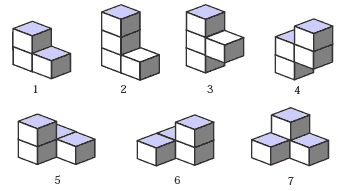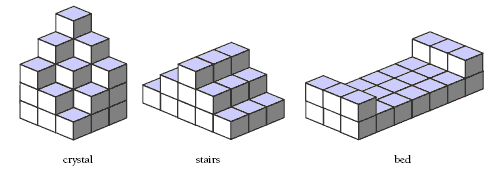This is a level 4 geometry strand activity from the Figure it Out series.
A PDF of the student activity is included.
Click on the image to enlarge it. Click again to close. Download PDF (221 KB)
draw three dimensional shapes on isometric paper
make three dimensional shapes from two dimensional pictures
FIO, Level 3-4, Geometry, Cube Creations, page 13
multilink cubes
classmate
Copmaster of isometric paper
This practical activity helps students to develop visualisation skills. It builds on the activity on pages 6–7 of Geometry, Figure It Out, Level 3.
Before the students put the puzzle together, encourage them to spend time examining the pieces, visualising which pieces should join together rather than repeatedly trying different combinations. Using different colours for each layer, as shown in the students’ booklet, will help the students to visualise how the pieces go together.
In question 2b, the students can draw the pieces on isometric dot paper (see the back of these teachers’ notes for a copymaster of isometric dot paper). These can be kept as a class resource for other students to use.
A very well-known 3 x 3 x 3 cube is the soma cube. It was invented by a Dane called Piet Hein. The cube is made up of all the irregular shapes formed by combining no more than four cubes. These shapes fit together to make the 3 x 3 x 3 cube. There are more than 230 different ways of constructing the cube. A good strategy for making the cube (and other target shapes) is to use the most complicated piece first. The seven soma pieces are shown below.
As an extension, the students could use the seven soma pieces to make target shapes such as those shown below or to create and draw their own shapes for classmates to model. (Students may have difficulty constructing the first two shapes below.)
Answers to Activity
1. a.–b. Practical activity
2. a.–b. Practical activity
3. a. Practical activity
b. Strategies will vary. You could:
- decide on the size of the cube and make sure none of the pieces are longer than the sides of the cube
- arrange the multilink cubes into a bigger cube without sticking them together. Then take groups of cubes off the big cube and stick them together in the same shape they had in the cube.


